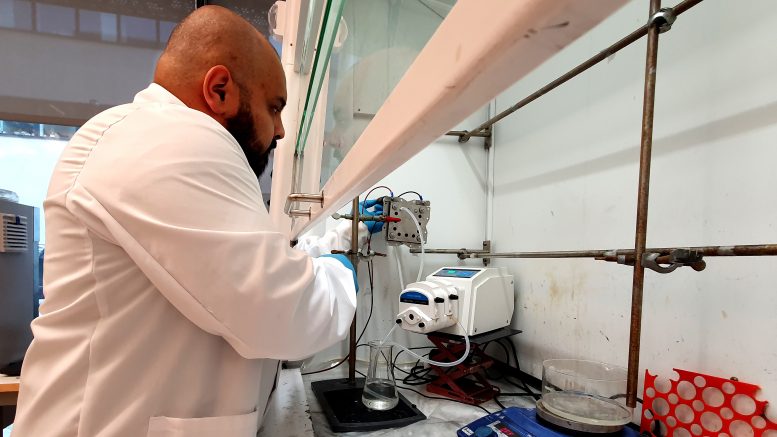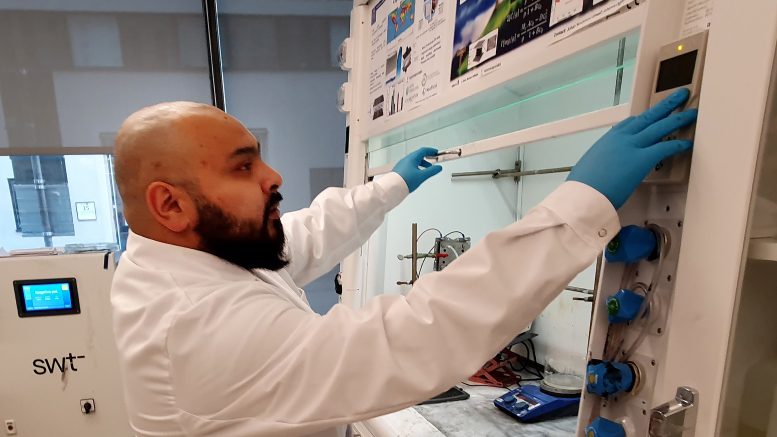New Method Is Safer, Simpler, and More Efficient
A new method for efficient hydrogen production that separates oxygen and hydrogen generation, developed by researchers in Sweden, eliminates explosion risks and the need for rare Earth metals, with a 99 percent efficiency rate. This innovation promises easier integration with renewable energies and has significant potential for commercial application.
Scientists in Sweden have developed an innovative method for generating hydrogen energy with enhanced efficiency. This process separates water into oxygen and hydrogen, eliminating the hazardous possibility of the two gases combining.
Developed at KTH Royal Institute of Technology in Stockholm, the new method decouples the standard electrolysis process for producing hydrogen gas, which splits water molecules by applying an electric current. In contrast with prevailing systems, it produces the resulting oxygen and hydrogen gases separately rather than simultaneously in the same cell, where they need to be separated by membrane barriers
That separation eliminates the possibility of the gases mixing with the risk of explosions, says researcher Esteban Toledo, a Ph.D. student at KTH who co-authored the paper published today in Science Advances along with Joydeep Dutta, professor of applied physics at KTH. It also eliminates the need for rare Earth metals.
The two researchers patented the system and a company, Caplyzer AB, was formed through KTH Innovation to scale the technology.

Co-author Esteban Toledo, PhD student at KTH Royal Institute of Technology, works with the decoupled water splitting prototype in Stockholm, Sweden. Credit: David Callahan
Commercial Viability and Efficiency
Dutta says the hydrogen gas Faradaic efficiency was shown to be 99 percent. The researchers also report that lab tests showed no apparent electrode degradation as a result of long-term tests, which is important for commercial applications.
Producing hydrogen from water always generates oxygen. A typical alkaline electrolyzer has a positive and negative electrode paired up inside a chamber of alkaline water, separated by an ion-permeable barrier. When an electric current is applied, water reacts at the cathode by forming hydrogen and negatively charged hydroxide ions which diffuse through the barrier to the anode to produce oxygen.
But the barrier causes resistance and if the electric charge fluctuates, the risk of an explosive mix between oxygen and hydrogen is heightened.
Toledo says re-conceptualizing water electrolysis sets the stage for a more reliable form of green energy production, incorporating intermittent sources such as solar or wind.
“Since we don’t risk mixing the gases, we can operate over a wider range of input power,” he says. “It’s much easier then to couple with renewable energies that generally provides variable power.”

A new way to produce hydrogen gas, simply and safely, was published today in Science Advances. Credit: David Callahan
The simultaneous production of gases is circumvented by replacing one of the electrodes with a supercapacitive electrode made from carbon. These electrodes alternately store and release ions, effectively separating hydrogen and oxygen production.
When the electrode is negatively charged and producing hydrogen, the supercapacitor stores energy-rich hydroxide (OH) ions. When the direction of the current is swapped, the supercapacitor releases the absorbed OH, and oxygen is produced at the now-positive electrode.
“One electrode does the evolution of both oxygen and hydrogen,” Dutta says. “It’s a lot like a rechargeable battery producing hydrogen – alternately charging and discharging. It’s all about completing the circuit.”
Reference: “Decoupled supercapacitive electrolyzer for membrane-free water splitting” by Esteban A. Toledo-Carrillo, Mario García-Rodríguez, Lorena M. Sánchez-Moren and Joydeep Dutta, 6 March 2024, Science Advances.
DOI: 10.1126/sciadv.adi3180
The research was funded in part by Vinnova and Åforsk.












